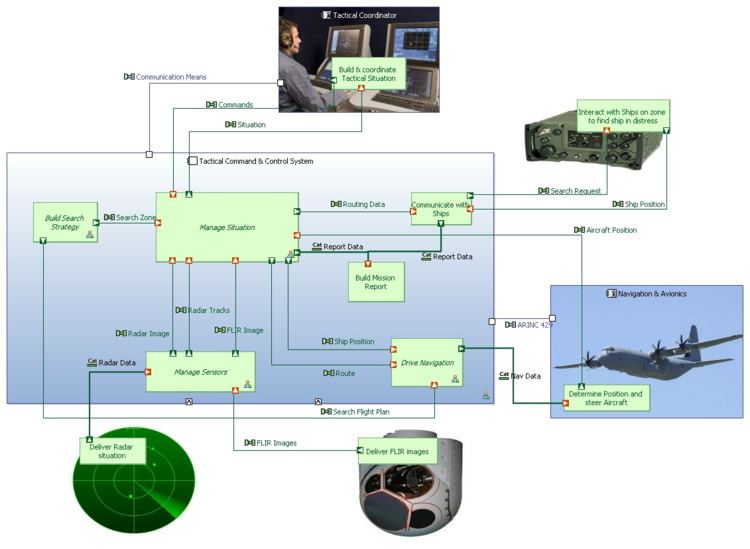Stable release 1.1.0 | ||
 | ||
Capella is an Open Source solution hosted at polarsys.org. The solution provides a process and tooling for graphical modeling of systems, hardware or software architectures, in accordance with the principles and recommendations defined by the Arcadia method. Capella is an initiative of PolarSys, one of several Eclipse Foundation working groups.
Contents
Usage
Capella is mainly used for modeling complex and safety-critical systems in embedded systems development for industries such as aerospace, avionics, transportation, space, communications and security and automotive.
History
Capella was created by Thales in 2007, and has been under continuous development and evolution since then. The objective is to contribute to the transformation of engineering, providing an engineering environment which approach is based on models rather than focused on documents, piloted by a process, and offering, by construction, ways to ensure effective co-engineering. Operational experts from engineering then defined a unified language for modeling architectures in the group and specified the associated tooling, Capella.
Capella provides ergonomics that are similar to PowerPoint / Visio and Excel tools. Hence, the resulting environment is actually intuitive and allows engineers to focus on defining their architectures instead of learning and operating complex generic modeling languages, such as UML or SysML, to capture their design requirements. Because it is based on the Arcadia method, it also guides engineers in their activities, which generic modeling tools in general, do not do. In 2015, Capella was released as an Eclipse open source project by PolarSys, a Working Group of the Eclipse Foundation through the French collaborative project Clarity, supported by the Banque Publique d’Investissement (Bpifrance). Capella has its own life cycle. A major release, providing new functionality is delivered each year end while several versions called minor, including bugs fixes, are generally delivered over the course of the year.
Principles
Capella comes with its own metamodel, which defines the language concepts the user can enable in a Capella project. The user creates an instance of this metamodel and can then view the model from various perspectives through diagrams, according to his/her concerns. The user can also, via the palette associated with diagrams, create new model elements. A Capella project consists of a model part ("melodymodeller") and a graphic part ("aird").
When a Capella project is created, the workbench interface is presented to the user. It contains various areas:
Diagrams
Through Capella, the user can handle several types of diagrams. The representation of elements in diagrams is governed by a color code specific to each type of analysis. Some examples of diagrams:
Extensibility
The workbench can be enhanced or specialized for a given business need, according to the concept of "Point of View", defined by the standard ISO/IEC 42010. These extensions provide, for example:
Compatibility
Capella is supported on environments based on Java 7 and higher on the following platforms:
Dependencies
The latest version of Capella is based on:
Community and communication
You can find links to the community and more information on the PolarSys website. Capella documentation is available for download from the website.
Capella was presented at several events:
